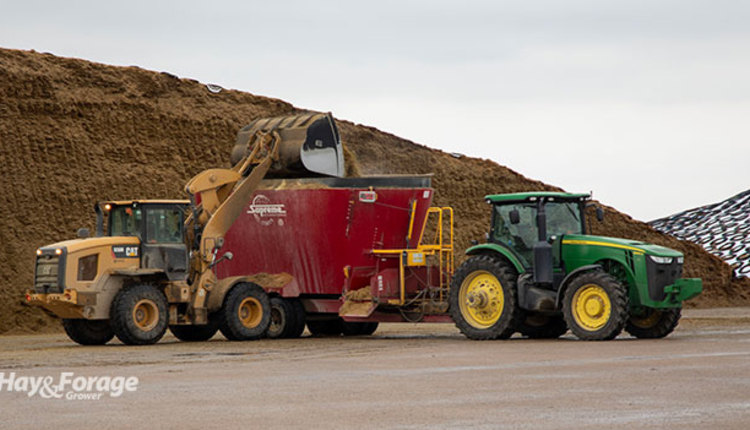
By now, some of this year’s corn silage has been in storage long enough to have undergone fermentation and is ready to be fed. The fermentation process can be complete within three weeks, although starch digestibility will improve the longer silage is stored.
Over time, corn silage will stabilize, and it will maintain its forage quality indefinitely if it is stored properly. Therefore, all efforts to minimize spoilage and maximize feed value during feedout will be worthwhile, whether silage is from this growing season or a previous one.
Pablo Loza with the University of Nebraska Extension says the aspects of silage production that ensure better storage are the same factors that affect forage quality at feedout. For example, adequate particle size, uniform packing density, and oxygen exclusion are necessary to initiate anaerobic fermentation. Likewise, particle size, packing density, and oxygen exposure will determine how quickly spoilage occurs in silage when it is removed from the pile.
With that said, the beef feedlot specialist points out that many producers hire custom harvesters to chop and pack silage, offering some quality control. Feedout, on the other hand, might be performed by different people in different ways. Chopping and packing may also be completed within a few days, whereas feedout is ongoing, creating more opportunities for spoilage.
“Once the silage is exposed to oxygen, aerobic fermentation starts to take place and the material starts to deteriorate,” Loza states. “For that reason, it is recommended to minimize the silage face’s exposure to the air.”
Leave a clean face
The best ways to minimize the silage face’s exposure to the air depend on the storage structure, the frequency and rate of feedout, and the equipment available for silage removal. Silage facers, cutting frames, and shear buckets are just a few of the tools used to remove silage; however, some are more precise than others. Regardless, the goal is to leave a clean face.
Loza suggests operator skills and attention to detail become paramount when specialized equipment is not available. Tactics such as approaching the silage face from the side and “shaving” forage off the pile instead of removing it head-on will leave a more even surface. He also recommends only taking a day’s worth of silage at a time and removing a layer of silage that is 6 to 8 inches thick across the entire length of the pile to reduce angles or overhangs that would expand the surface area.
Consider the costs and benefits of buying new equipment to make feedout more efficient. Loza notes the potential to save approximately 5% of forage due to less silage spoilage by using specific removal gear. Less silage spoilage may also translate to greater livestock feed intakes if forage quality and palatability are better preserved.
Determine how many days a year a new silage facer would be used and estimate maintenance and depreciation costs to justify a return on investment. Available labor and operator safety are other factors to consider before buying an additional piece of machinery.
In concluding, Loza emphasizes that farmers only remove the amount of silage that is going to be used at a time, use the technique or gear that leaves the smallest exposed surface possible, and be overly cautious when working close to the silo face.

